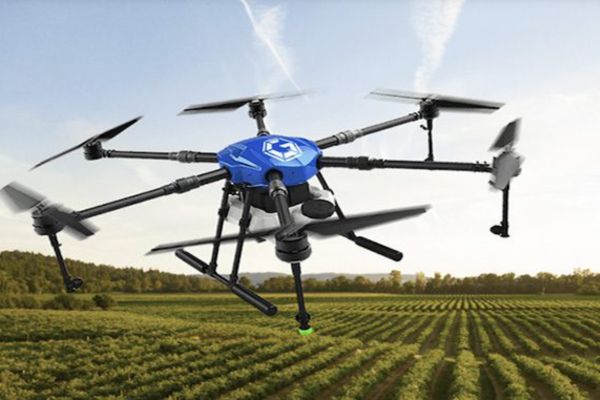India’s journey toward achieving self-reliance in defense has entered a transformative phase, fueled by bold reforms, strategic investments, and a firm commitment to indigenization. Among the many sectors witnessing rapid growth, drone technology has emerged as a game-changer in modern warfare, border security, and homeland resilience. With the Make in India and Atmanirbhar Bharat initiatives as guiding forces, indigenous drone manufacturing is now at the heart of India’s defense strategy, enhancing both national security and economic potential.
The Rise of Indigenous Drone Manufacturing
Drones have become indispensable to modern militaries worldwide, offering capabilities ranging from surveillance and reconnaissance to combat operations and logistics support. Recognizing this, India has significantly ramped up its focus on Unmanned Aerial Vehicles (UAVs) and Remotely Piloted Aircraft Systems (RPAS), with a strong emphasis on domestic development and production.
In recent years, Indian drone startups and defense manufacturers have made significant strides in designing and deploying UAVs tailored to the subcontinent’s terrain and strategic requirements. The Defence Research and Development Organisation (DRDO), in collaboration with private-sector players, has developed several indigenous drone systems for tactical and strategic applications. The country’s drone industry is now not only meeting domestic requirements but also entering global markets, marking India’s growing footprint in defense exports.
According to PIB, The value of India’s overall defense production reached a historic high of ₹1.27 lakh crore in FY 2023–24, driven significantly by sectors such as drone manufacturing. This remarkable 174% growth from FY 2014–15 is a strong indicator of the maturing of India’s defense industrial base.
Enhancing Self-Reliance in Defense
Indigenous drone production contributes directly to India’s strategic goal of self-reliance by reducing dependence on foreign suppliers and enhancing the operational readiness of the armed forces. With drones increasingly becoming the first line of intelligence gathering, surveillance, and reconnaissance (ISR), localized manufacturing enables the development of systems suited to India’s diverse geography, be it the high-altitude terrains of Ladakh or the dense forests of the Northeast. Indian drone startups are now equipped with advanced sensors and high-resolution cameras, enabling real-time monitoring and delivery of critical intelligence for defense operations, border surveillance, and strategic reconnaissance. Drones have been used in Kerala, India to survey flood-stricken areas, plan rescue efforts, and monitor rising water levels.
Moreover, indigenization leads to faster maintenance cycles, easier technology upgrades, and robust supply chain security, thus strengthening India’s strategic autonomy.
Driving Economic Growth and Job Creation
The surge in indigenous defense production, particularly in the drone segment, is not only a national security imperative but also a major driver of economic growth. As the government opens up defense manufacturing to startups, MSMEs, and private enterprises, the ecosystem is witnessing a wave of entrepreneurship, investment, and employment.
Drone manufacturing, servicing, pilot training, software development, and data analytics are creating thousands of skilled and semi-skilled jobs. The demand for trained drone operators and maintenance technicians is rising rapidly, especially with the dual-use applications of drones in agriculture, disaster management, infrastructure inspection, and law enforcement.
To further harness this potential, the government has introduced policy frameworks such as the Production-Linked Incentive (PLI) Scheme for Drones and Drone Components, aimed at making domestic manufacturing globally competitive and cost-efficient.
Public-Private Partnerships and Startup Ecosystem
India’s drone success story is being written through strong public-private collaboration. Startups have partnered with institutions to accelerate R&D and deployment. Platforms like Innovations for Defence Excellence (iDEX) are enabling technology co-development and faster integration into defense forces. These partnerships are democratizing defense production, allowing nimble private players and deep-tech innovators to contribute to national security in meaningful ways.
Skill Creation: The Backbone of Indigenous Growth
While technological development is crucial, the long-term sustainability of indigenous defense manufacturing depends heavily on skilled human capital. Building a pipeline of talent—engineers, pilots, technicians, and data analysts—is vital to maintaining momentum. Initiatives like Drone Shakti, the Skill India Mission, and DGCA-certified drone schools are training thousands of young Indians in drone operations, aerial mapping, and maintenance. Several IITs and engineering colleges have also introduced drone tech into their curriculum and research projects, helping bridge the talent gap and foster innovation.
Counter-Drone Systems and Future Focus
With increasing drone usage comes the rising threat of rogue drones. India is simultaneously investing in anti-drone technologies such as DRDO’s D4 system, which detects, jams, and neutralizes hostile UAVs. A balanced growth of drone deployment and counter-drone capabilities will be key to a secure airspace and infrastructure. Looking ahead, future areas of focus include swarm drone technologies, autonomous navigation, hybrid UAVs, and AI-powered threat detection systems—all being developed with a strong local footprint.
India stands at the cusp of a new defense paradigm—one where homegrown technologies, empowered startups, and a skilled workforce converge to build a secure and self-reliant nation. Indigenous drone manufacturing is not just a technological feat; it is a strategic imperative that reflects India’s commitment to Atmanirbharta in defense.
As we continue to innovate, invest, and inspire, India’s drone sector will play a defining role in shaping the country’s defense narrative for decades to come—ensuring that the skies are not only watched and protected, but also controlled by Indian ingenuity and leadership.

By Agnishwar Jayaprakash, Founder and CEO of Garuda Aerospace


















